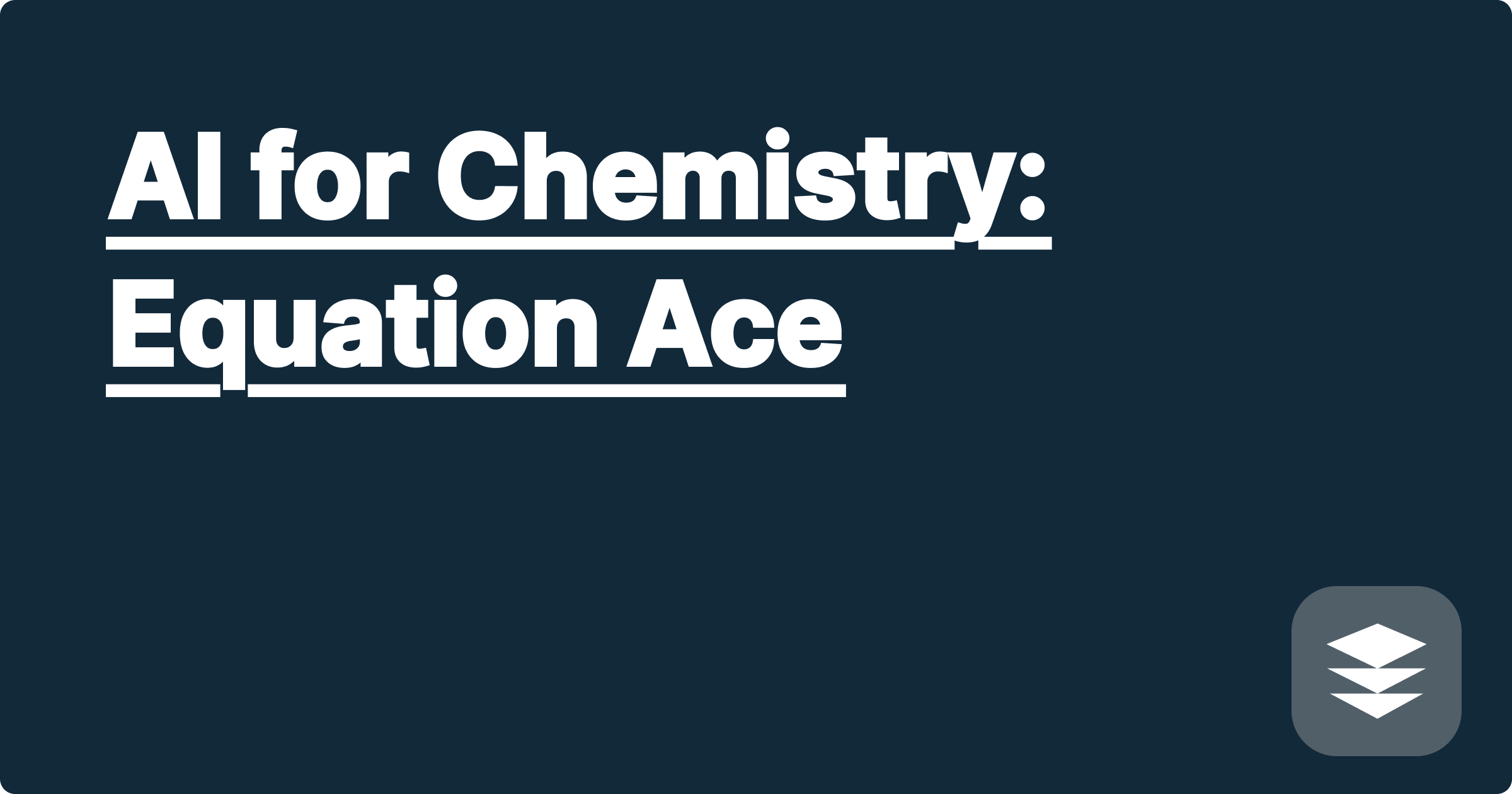
The world of STEM is built upon a foundation of complex equations, intricate models, and massive datasets. For students and researchers, navigating this landscape can feel like an uphill battle, often demanding countless hours spent wrestling with calculations and deciphering data. Imagine a world where these tedious tasks could be streamlined, freeing up valuable time for deeper thinking and exploration. That’s the promise of AI tools in STEM, and specifically, the focus of this post: how AI can transform your approach to chemistry, turning you into an "Equation Ace."
This blog post explores the practical applications of AI in chemistry, focusing on how these tools can dramatically boost your productivity, whether you're tackling challenging homework problems or conducting cutting-edge research. We'll delve into specific AI-powered platforms and demonstrate how they can be integrated into your workflow, saving you time and enhancing the accuracy of your work. This isn't just about introducing you to new software; it's about empowering you to leverage AI to become a more efficient and effective chemist.
Chemistry, at its core, revolves around understanding the interactions of matter. This understanding often requires balancing complex chemical equations, predicting reaction outcomes, and analyzing experimental data. Traditionally, these tasks have relied heavily on manual calculations and interpretations, often requiring extensive time and effort. For students, this can translate to late nights struggling with homework problems, while researchers may find themselves bogged down in data analysis, hindering their progress. The sheer volume of information and the complexity of the underlying principles can be overwhelming, creating a significant barrier to efficient and effective learning and research.
Artificial intelligence offers a powerful new approach to these challenges. Tools like Wolfram Alpha, ChatGPT, and even specialized chemistry software incorporating AI algorithms can automate many of the tedious tasks associated with chemical problem-solving. Wolfram Alpha, for instance, excels at solving complex equations and providing detailed information on chemical compounds. ChatGPT can act as a virtual tutor, guiding you through the steps of a problem or explaining difficult concepts. These tools aren't just calculators; they can provide step-by-step solutions, explain underlying principles, and even offer alternative approaches to a problem.
Let's walk through a practical example. Suppose you're faced with balancing a complex redox reaction. Instead of laboriously working through the half-reaction method by hand, you can input the unbalanced equation directly into Wolfram Alpha. The platform will not only provide the balanced equation but also offer insights into the oxidation states of each element, the number of electrons transferred, and even the standard cell potential. Similarly, if you're struggling to understand the mechanism of a specific organic reaction, you can ask ChatGPT to explain it, and it will provide a detailed explanation, often accompanied by helpful diagrams. For data analysis, tools like Python libraries with integrated AI capabilities can automate tasks like identifying trends, fitting models, and visualizing results.
Consider a scenario where a researcher is analyzing spectroscopic data to identify unknown compounds in a complex mixture. Traditionally, this would involve painstakingly comparing the spectrum to known standards. However, AI-powered tools can now analyze the data, identify key spectral features, and suggest potential matches from vast databases, significantly accelerating the identification process. Another example involves predicting the properties of novel materials. AI algorithms can analyze the molecular structure of a proposed material and predict its properties, such as melting point, boiling point, and reactivity, guiding the design and synthesis of new materials with desired characteristics. In drug discovery, AI is revolutionizing the process by predicting the binding affinity of drug candidates to target proteins, accelerating the identification of promising leads.
Integrating AI tools into your workflow requires a strategic approach. First, identify the specific areas where you spend the most time and effort. Are you bogged down by balancing equations? Is data analysis consuming your research time? Once you've pinpointed your bottlenecks, choose the right AI tool for the job. Experiment with different platforms to find the ones that best suit your needs and learning style. Don't be afraid to ask for help. Online forums and communities dedicated to AI in STEM are excellent resources for learning new techniques and troubleshooting problems. Remember, AI is a tool, and like any tool, its effectiveness depends on how skillfully it's used.
In my own research, I initially struggled with using AI for complex data visualization. I was overwhelmed by the sheer number of options and parameters available in the software. However, by taking online tutorials and connecting with other researchers using similar tools, I was able to overcome this hurdle and now use AI to create stunning visualizations that effectively communicate my findings. This experience taught me the importance of persistence and the value of community in navigating the ever-evolving landscape of AI in STEM.
To fully embrace the potential of AI in chemistry, you must move beyond simply using these tools for individual tasks. Think about how AI can be integrated throughout your entire workflow, from initial hypothesis generation to final data interpretation and publication. Explore the possibilities of combining different AI tools to create a synergistic ecosystem that amplifies your productivity. Stay informed about the latest advancements in AI and actively seek out new tools and techniques. By embracing a growth mindset and continuously exploring the potential of AI, you can transform your approach to chemistry, becoming a true "Equation Ace" and unlocking new frontiers of discovery.
AI in Robotics: Efficient Simulations
GPAI: Your AI Study Partner for STEM
AI Research Notes: Organize Smartly
Ace STEM Exams: AI Study Partner
AI in CAD: Design Smarter, Faster
AI for Chemistry: Equation Ace
AI for Biology: Data Visualization
AI for Simulations: Optimize Results